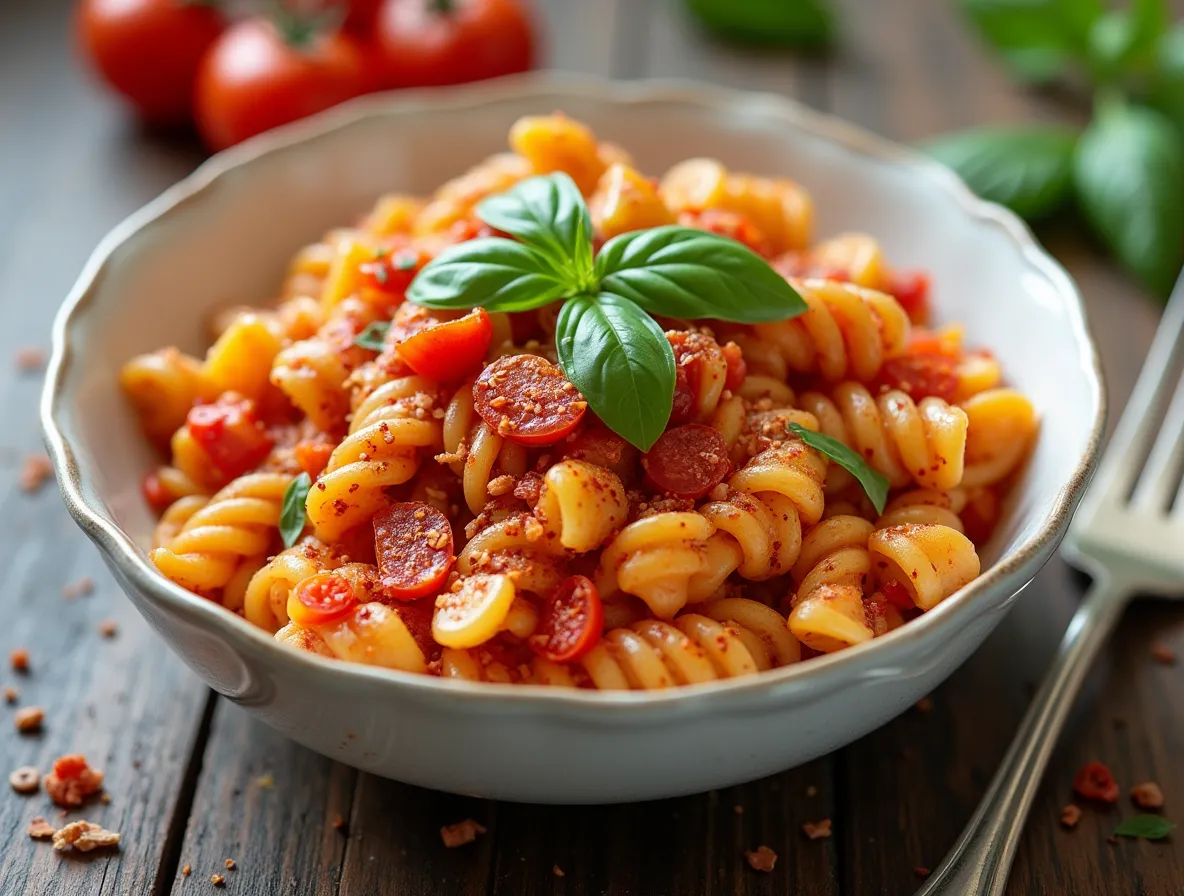Introduction
When you think of pasta sauce, your mind might jump to traditional Alfredo, tangy marinara, or maybe even a pesto swirl. But in today’s world of healthier eating and protein-packed meals, there’s a new sauce on the rise — Cottage Cheese Pasta Sauce. This unexpected hero is transforming how we approach creamy pasta dishes, delivering not just a velvety texture but also a powerful boost of nutrition.
Once relegated to breakfast bowls or dieter’s plates, cottage cheese has found its culinary redemption. Its naturally creamy consistency, mild flavor, and high protein content make it a perfect base for a luscious pasta sauce — all without the heavy cream, butter, or guilt. And the best part? It’s incredibly easy to make at home.
Whether you’re trying to eat healthier, boost your protein intake, or just explore new, exciting flavors in your kitchen, this sauce ticks all the right boxes. It blends beautifully with herbs, spices, and vegetables, adapts to different pasta types, and satisfies both adults and kids alike..Easy White Bean Dip Recipe
In this article, we’ll walk you through everything you need to know about making and mastering cottage cheese pasta sauce — from understanding its health benefits and creating the perfect blend to customizing your own variations and troubleshooting common cooking mistakes. You’ll also get serving suggestions, recipe tips, and answers to your most frequently asked questions.
This is more than just a recipe — it’s a guide to transforming a humble cheese into a culinary masterpiece that fits into nearly every dietary lifestyle, whether you’re low-carb, vegetarian, or simply a fan of great food.
Let’s dive into the creamy, protein-rich world of cottage cheese pasta sauce — where comfort food meets clean eating..Trader Joe’s Tomato Burrata Ravioloni with Spicy Vodka Sauce
Why Choose Cottage Cheese for Pasta Sauce?
Cottage cheese may not be the first ingredient that comes to mind when you think of pasta sauce, but it’s quickly gaining traction among health-conscious cooks and foodies alike. The reason? It brings an unbeatable combination of creaminess, nutrition, and versatility. Let’s explore why cottage cheese is such a fantastic option for your next pasta night.
Nutritional Profile of Cottage Cheese
Cottage cheese is a powerhouse of nutrients. It’s rich in protein, relatively low in calories, and packed with essential vitamins and minerals that support overall health. Here’s a breakdown of its key nutritional elements:
High Protein Content
One of the biggest advantages of using cottage cheese in pasta sauce is its high protein content. Just one cup of low-fat cottage cheese can contain over 25 grams of protein. That’s more than enough to turn a regular pasta dish into a high-protein meal, especially beneficial for athletes, gym-goers, or anyone looking to build and repair muscle..Lemon & Herb Chicken Pot Pie
Low in Fat and Calories
Compared to heavy cream or cheese-based sauces, cottage cheese offers a lighter alternative. You can use low-fat or fat-free varieties to reduce the overall calorie content while still achieving a creamy texture. This makes it an excellent choice for people watching their weight or trying to eat clean.
Rich in Essential Nutrients
Cottage cheese is also a great source of calcium, phosphorus, selenium, vitamin B12, and riboflavin. These nutrients are important for bone health, immune function, and maintaining energy levels throughout the day.
Health Benefits of Cottage Cheese Pasta Sauce
Integrating cottage cheese into your pasta sauce isn’t just a culinary decision — it’s a smart health move. Here are some of the major benefits you’ll enjoy:
Aiding Weight Management
The high protein content in cottage cheese promotes satiety, meaning it helps you feel full longer. This can prevent overeating and snacking between meals, which is a key factor in healthy weight management. Replacing high-fat sauces with a cottage cheese-based one also reduces your overall calorie intake.
Supporting Muscle Growth and Repair
Because it’s a complete protein, cottage cheese provides all the essential amino acids your body needs for muscle repair and growth. This makes it especially beneficial as a post-workout meal when combined with carbohydrates from pasta.
Promoting Bone Health
Thanks to its high calcium and phosphorus content, cottage cheese supports strong bones and teeth. Regular consumption can help reduce the risk of osteoporosis and maintain bone density as you age.
Supporting Metabolism and Energy Levels
Cottage cheese contains several B vitamins, including B12 and riboflavin, which play a crucial role in converting food into energy. They also support brain function and red blood cell production, making this sauce not only tasty but functional too..Cottage Cheese Cheesecake
Versatility in Dietary Plans
Cottage cheese pasta sauce is naturally vegetarian and can be easily adapted for different dietary needs:
- Low-carb/keto-friendly when paired with low-carb noodles like zucchini or shirataki.
- Gluten-free, as long as you choose gluten-free pasta.
- Weight-loss friendly due to its high protein, low fat ratio.
Budget-Friendly and Accessible
Cottage cheese is relatively inexpensive and widely available at most grocery stores. It offers a cost-effective alternative to pricier cheese sauces or specialty ingredients without compromising on taste or texture.
External Link 1: Learn more about the health benefits of cottage cheese from Healthline.
External Link 2: Explore more high-protein recipes with cottage cheese from EatingWell.
With all these benefits, it’s no surprise that cottage cheese is becoming a top choice for healthy, satisfying pasta dishes. Next, we’ll walk through the exact steps to create your own delicious cottage cheese pasta sauce at home.
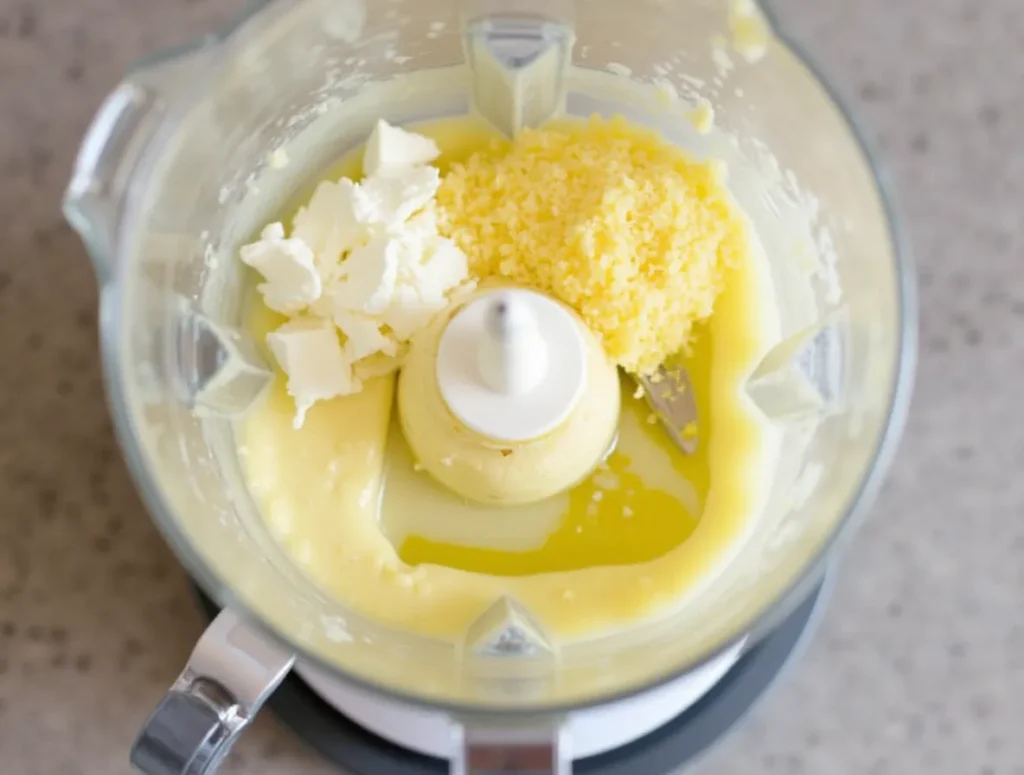
How to Make Cottage Cheese Pasta Sauce
Making cottage cheese pasta sauce at home is surprisingly easy — even for beginners. It requires minimal ingredients, basic kitchen tools, and about 15–20 minutes of your time. Whether you’re preparing a quick dinner for the family or trying to impress with a healthier version of creamy pasta, this recipe is both practical and delicious.
Ingredients Needed
To get started, you’ll need the following simple ingredients. These are common pantry items and can easily be adjusted to fit your personal tastes:
- 1 cup of cottage cheese (full-fat or low-fat depending on preference)
- 1/4 cup of milk or pasta water (to thin the sauce)
- 2 cloves of garlic (minced)
- 2 tablespoons of olive oil or butter
- 1/4 cup grated Parmesan cheese (for added flavor and creaminess)
- 1 teaspoon salt
- 1/2 teaspoon black pepper
- 1/2 teaspoon dried basil or Italian seasoning
- 1/4 teaspoon crushed red pepper flakes (optional for a little heat)
- Fresh parsley or chives for garnish
- Cooked pasta of your choice (penne, fettuccine, or fusilli work great)
Optional Add-ins:
- Sauteed mushrooms
- Spinach or kale
- Grilled chicken or shrimp
- Roasted cherry tomatoes
Preparation Steps
Step 1: Blend the Cottage Cheese
Start by placing the cottage cheese in a blender or food processor. Add the milk (or reserved pasta water) and blend until smooth and creamy. This step is crucial for achieving a silky texture that coats your pasta beautifully.
Step 2: Sauté the Aromatics
In a large skillet, heat the olive oil or butter over medium heat. Add the minced garlic and cook for about 1–2 minutes until fragrant, but not browned. This infuses the oil with flavor and adds depth to the sauce.
Step 3: Combine and Simmer
Pour the blended cottage cheese mixture into the skillet with the garlic. Stir in the Parmesan cheese, salt, pepper, and herbs. Let it simmer for about 3–5 minutes, stirring occasionally. If the sauce thickens too much, add a splash more milk or pasta water to loosen it.
Step 4: Add Cooked Pasta
Drain your pasta and add it directly into the skillet with the sauce. Toss well to ensure the noodles are fully coated. The sauce should cling to the pasta like a traditional Alfredo, but with a lighter texture.
Step 5: Serve and Garnish
Plate the pasta and top it with fresh parsley, extra Parmesan, or your favorite garnish. Serve hot with a side of garlic bread or a crisp salad.
Quick Tip: For a richer flavor, you can sauté chopped onions along with the garlic or add a tablespoon of tomato paste before pouring in the blended cheese.
Make-Ahead and Storage Tips
- Storage: Keep leftovers in an airtight container in the refrigerator for up to 3 days.
- Reheating: Warm gently in a skillet over low heat. Add a little milk to restore creaminess.
- Make-Ahead: You can blend and refrigerate the sauce (without heating) for up to 2 days. Heat and combine with pasta when ready to serve.
External Link 3: See this helpful step-by-step pasta sauce guide from Bon Appétit for more inspiration.
With this easy base recipe in your repertoire, you can now explore delicious twists and variations using the same simple method. Let’s explore those in the next section.
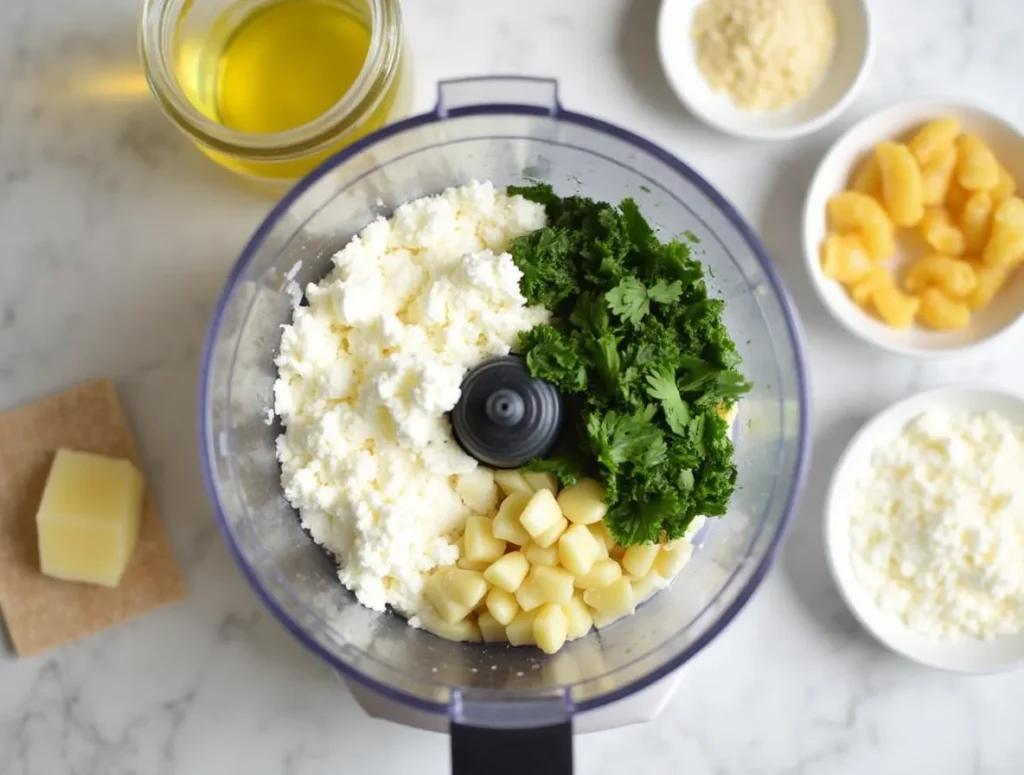
Variations of Cottage Cheese Pasta Sauce
One of the best things about cottage cheese pasta sauce is its adaptability. Once you’ve mastered the basic version, you can easily customize it to suit your taste, dietary preferences, or the ingredients you have on hand. Below are some of the most popular and delicious variations of this sauce, ranging from rich and creamy Alfredo-style to spicy tomato-infused creations.
Cottage Cheese Alfredo Sauce
The Healthier Creamy Alternative
Traditional Alfredo sauce is known for its luxurious, buttery richness—but it’s also loaded with heavy cream and calories. By swapping in cottage cheese, you create a high-protein, lower-fat Alfredo alternative that doesn’t skimp on flavor.
Ingredients for Alfredo Variation:
- 1 cup cottage cheese
- 1/4 cup grated Parmesan
- 2 cloves garlic, minced
- 1/2 cup milk or unsweetened almond milk
- Salt and pepper to taste
- Pinch of nutmeg (optional)
Preparation Tip: Blend everything until ultra-smooth and warm it in a pan. Add cooked fettuccine and toss to coat. Top with extra Parmesan and chopped parsley for a complete dish.
Why It Works: The creamy texture of blended cottage cheese mirrors the luxurious mouthfeel of Alfredo, but with a fraction of the fat and double the protein.
Spicy Cottage Cheese Tomato Sauce
A Zesty, High-Protein Marinara Hybrid
Love a good tomato-based sauce? Try blending cottage cheese with marinara or crushed tomatoes for a tangy, spicy, and creamy hybrid that brings the best of both worlds. This is perfect for fans of vodka sauce or arrabbiata.
Ingredients for Tomato Variation:
- 1/2 cup cottage cheese
- 1 cup marinara sauce
- 1/4 cup pasta water
- 1 clove garlic
- 1/2 teaspoon red pepper flakes
- Salt, pepper, and basil to taste
Preparation Tip: Blend cottage cheese with marinara and seasonings until smooth. Simmer briefly, then add pasta and stir well. Add cooked sausage or grilled vegetables for more texture and flavor.
Why It Works: The cottage cheese adds creaminess and depth to the tomato base, creating a velvety finish that clings beautifully to pasta noodles.
Herb-Infused Cottage Cheese Sauce
Fresh, Fragrant, and Flavorful
For a lighter and more aromatic take, infuse your cottage cheese sauce with fresh or dried herbs. This is especially great for spring or summer meals, and pairs well with vegetables and lighter proteins like chicken or shrimp.
Popular Herbs to Use:
- Fresh basil
- Parsley
- Chives
- Dill
- Thyme
How to Prepare:
Blend the cottage cheese with a handful of your favorite herbs, olive oil, garlic, and a splash of lemon juice for brightness. Toss with linguine or angel hair pasta and garnish with extra herbs.
Why It Works: The herbs bring freshness and color, elevating a simple sauce into something vibrant and restaurant-worthy.
Vegan and Dairy-Free Option
For those who are lactose-intolerant or follow a plant-based diet, there are high-protein, dairy-free cottage cheese alternatives made from almond or tofu bases. Simply use one of these substitutes and follow the same blending and preparation steps. Nutritional yeast can replace Parmesan to keep the umami kick.
Bonus Twist: Add Protein and Veggies
Enhance your sauce with:
- Grilled chicken, tofu, or shrimp for extra protein
- Roasted zucchini, mushrooms, or spinach for added fiber and nutrients
- Sun-dried tomatoes or olives for a Mediterranean twist
These additions turn your pasta into a complete, balanced meal.
With these cottage cheese sauce variations, your pasta nights will never be boring again. And the best part? You get flavor, nutrition, and comfort—all in one dish.
Tips for the Perfect Cottage Cheese Pasta Sauce
Even though cottage cheese pasta sauce is simple to make, a few expert tips can elevate your dish from good to gourmet. From choosing the right ingredients to understanding texture and pasta pairing, these details will ensure your sauce is always smooth, flavorful, and satisfying.
Choosing the Right Cottage Cheese
Full-Fat vs. Low-Fat
The texture and flavor of your sauce largely depend on the type of cottage cheese you choose. Full-fat versions tend to create a richer, creamier sauce with a more decadent mouthfeel. However, low-fat or fat-free options are excellent if you’re watching your calorie intake.
- Full-fat = creamier, silkier finish
- Low-fat = lighter, slightly grainier if not blended well
Pro Tip: Always check the ingredient list for added sugars or unnecessary thickeners. Choose a brand with minimal ingredients—ideally just milk, cream, and salt.
Curd Size Matters
Cottage cheese comes in small-curd and large-curd varieties. Small-curd is easier to blend into a smooth sauce, while large-curd may require extra time in the blender. Whichever you choose, blending is key to achieving a restaurant-quality texture.
Blending Techniques
Achieving a Smooth, Velvety Sauce
The texture is one of the most important aspects of this sauce. You don’t want lumps or a gritty feel—so blending well is critical.
Best Practices for Blending:
- Use a high-speed blender or food processor for 1–2 minutes.
- Add a splash of milk or pasta water to help smooth it out.
- For extra creaminess, blend in a tablespoon of olive oil or cream cheese.
Optional Step: Strain the blended sauce through a fine mesh sieve for a perfectly silky consistency—ideal for elegant pasta presentations.
Pairing with Pasta Types
The right pasta shape can enhance how well your sauce clings and how the overall dish feels in your mouth. Here’s a quick guide:
| Pasta Type | Why It Works |
|---|---|
| Penne or Rigatoni | Tube-shaped; holds sauce inside for flavor bursts |
| Fettuccine | Flat and wide; ideal for creamy sauces |
| Rotini or Fusilli | Twists hold the sauce in every spiral |
| Spaghetti | Works well with smooth, thin versions of the sauce |
| Gnocchi | For a heavier, comforting dish |
Pro Tip: Always reserve 1/4 cup of pasta water. The starchy liquid helps loosen the sauce if it thickens too much and helps bind it to the noodles.
Flavor Enhancements and Seasoning
The base sauce is mild, so seasoning plays a major role. Consider these ideas to add depth:
- Umami: Parmesan, sun-dried tomatoes, or mushrooms
- Freshness: Lemon zest, basil, parsley
- Spice: Crushed red pepper, smoked paprika, or cayenne
- Savory: Garlic powder, onion powder, black pepper
Don’t forget to taste as you go. Cottage cheese varies in saltiness, so seasoning should be adjusted accordingly.
Common Mistakes to Avoid
Even simple recipes can go wrong if you’re not careful. Here’s what to watch out for:
Overheating the Sauce
Cottage cheese can break down and become grainy if overheated. Always warm gently over low to medium heat, and avoid boiling.
Skipping the Blend
Skipping the blending process or doing it half-heartedly can result in a sauce that’s too chunky or uneven. Blend thoroughly for the smoothest result.
Not Adjusting Consistency
The sauce thickens quickly once off the heat. Keep extra milk or pasta water nearby to adjust as needed.
By following these expert-approved tips, you’ll master the art of creating a luscious, nutritious pasta sauce that rivals anything made with cream or butter. With just a bit of planning and precision, your dish will be both delicious and visually impressive.
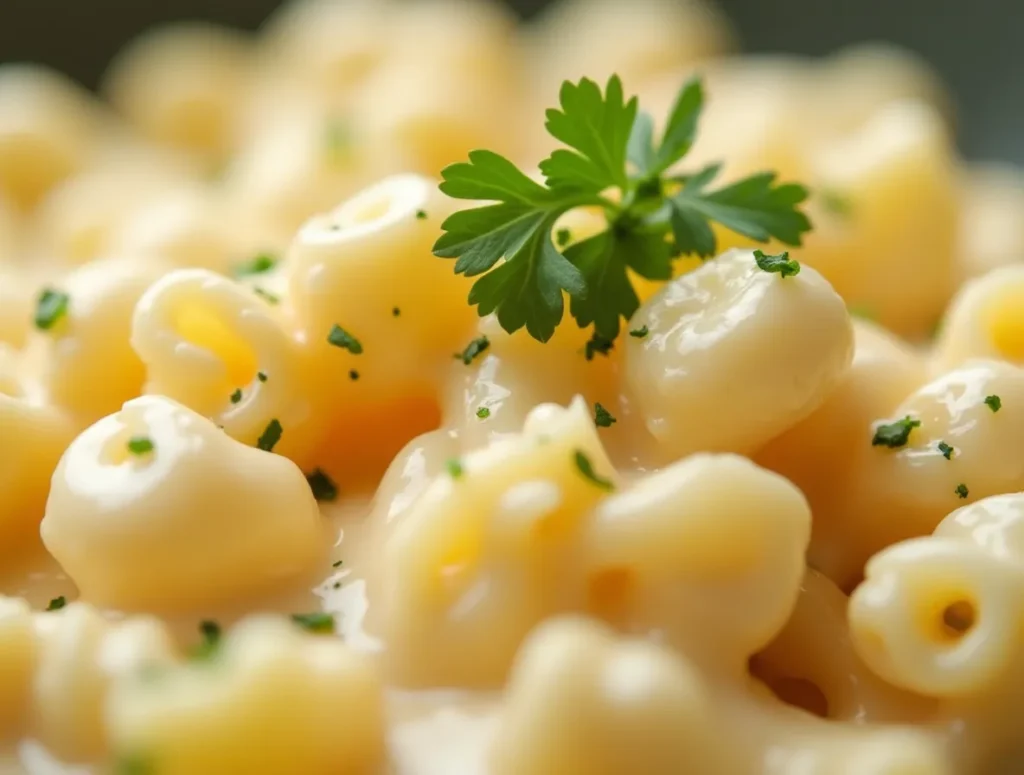
Serving Suggestions, FAQs, and Conclusion
Once your cottage cheese pasta sauce is ready, it’s time to plate it like a pro. Serving your pasta with the right sides, garnishes, and accompaniments can turn a simple meal into an unforgettable dining experience. In this final section, we’ll share serving ideas, answer popular questions, and wrap up with some final thoughts.
Serving Suggestions
Best Side Dishes
Pairing your pasta with complementary sides balances the meal and enhances the flavor profile. Here are some tried-and-true options:
- Garlic Bread: A classic crunchy counterpart to creamy pasta.
- Simple Green Salad: Light and refreshing, especially with vinaigrette dressing.
- Roasted Vegetables: Think asparagus, zucchini, or bell peppers.
- Bruschetta or Tomato Salad: Adds acidity and freshness.
Garnishing Ideas
Garnishes are more than decoration — they add texture and flavor.
- Fresh herbs: Chopped parsley, basil, or chives
- Grated Parmesan: For a salty, umami kick
- Red chili flakes: A sprinkle for those who like a little spice
- Toasted pine nuts or crushed walnuts: For a bit of crunch
Frequently Asked Questions (FAQs)
Can I use low-fat cottage cheese?
Yes! Low-fat versions work well, especially when blended thoroughly. Just note that the sauce may be slightly less creamy compared to full-fat versions.
How long can I store the sauce?
You can store the sauce in an airtight container in the fridge for up to 3 days. Reheat gently on the stove with a splash of milk to bring back the creaminess.
Is this sauce suitable for kids?
Absolutely. Its mild flavor and creamy texture make it appealing to children. You can even sneak in some blended veggies like carrots or spinach for extra nutrition.
Can I freeze cottage cheese pasta sauce?
It’s not ideal, as the texture may become grainy after freezing. If you must freeze it, do so in a tightly sealed container and re-blend when reheating to help restore smoothness.
What pasta types work best with this sauce?
Tube shapes like penne and rigatoni or ridged varieties like fusilli are best because they capture the sauce well. However, thin noodles like fettuccine and spaghetti also work beautifully.
How can I make the sauce spicier?
Add red pepper flakes, cayenne powder, or a small amount of hot sauce. You can also sauté jalapeños or chili peppers with the garlic for an infused heat.
Conclusion
Cottage cheese pasta sauce is more than a trendy recipe — it’s a game-changing alternative to traditional creamy sauces. It blends nutrition, flavor, and comfort into one simple dish that fits seamlessly into any lifestyle.
Whether you’re trying to eat healthier, boost your protein intake, or explore new culinary territory, this sauce delivers on every level. It’s quick to make, endlessly customizable, and kid-friendly, making it perfect for weeknight meals or special occasions alike.
So, next time you’re craving something rich and satisfying, skip the cream and reach for cottage cheese. Your body — and your taste buds — will thank you.
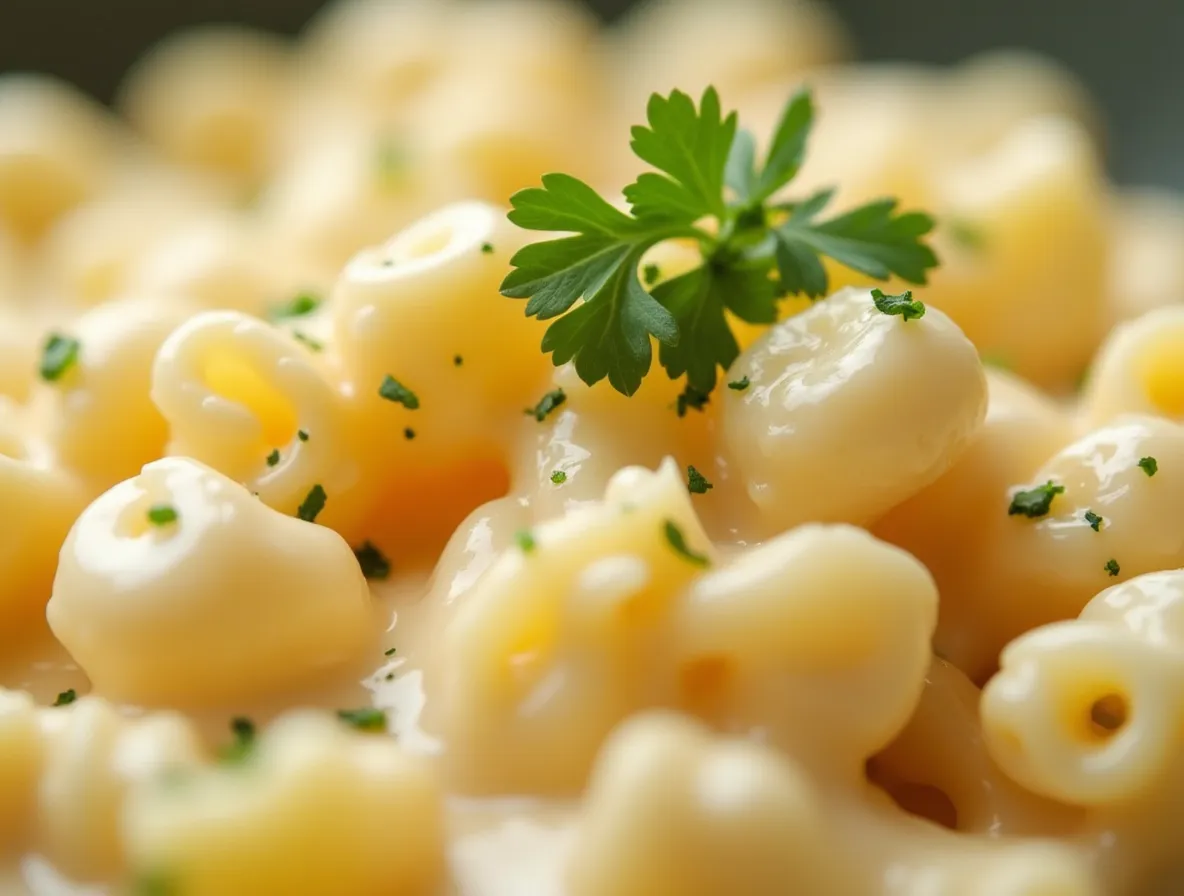
Name: Cottage Cheese Pasta Sauce
Ingredients
Equipment
Method
- Instructions
- Blend: In a blender or food processor, combine cottage cheese and milk (or pasta water). Blend until completely smooth and creamy.
- Sauté Garlic: In a skillet, heat olive oil or butter over medium heat. Add minced garlic and cook for 1–2 minutes until fragrant.
- Combine: Pour the blended sauce into the skillet. Stir in Parmesan cheese, salt, pepper, and herbs. Simmer on low heat for 3–5 minutes.
- Mix with Pasta: Add cooked pasta to the sauce. Toss to coat evenly. Add more milk or pasta water if needed to loosen the sauce.
- Serve: Garnish with parsley or chives and extra Parmesan. Serve immediately.
Notes
Use full-fat cottage cheese for a richer texture. Add sautéed mushrooms, spinach, or grilled chicken for variety. Avoid boiling the sauce to maintain a creamy consistency. Leftovers keep in the fridge for 2–3 days; reheat gently.

